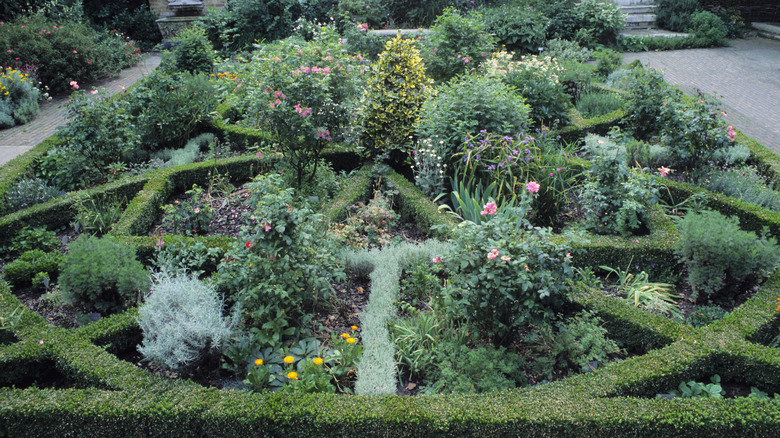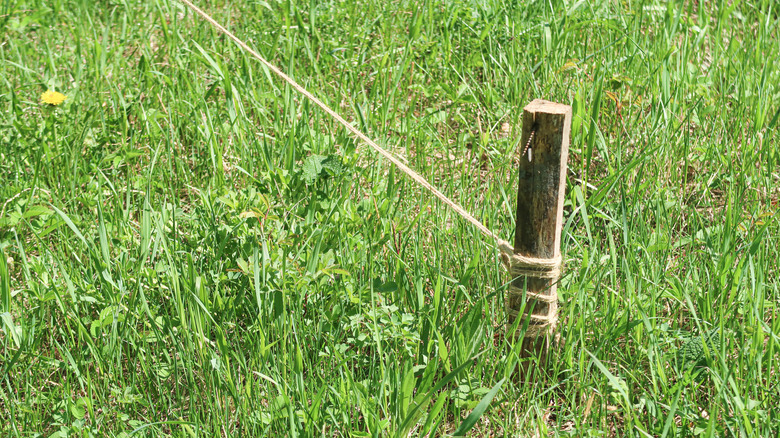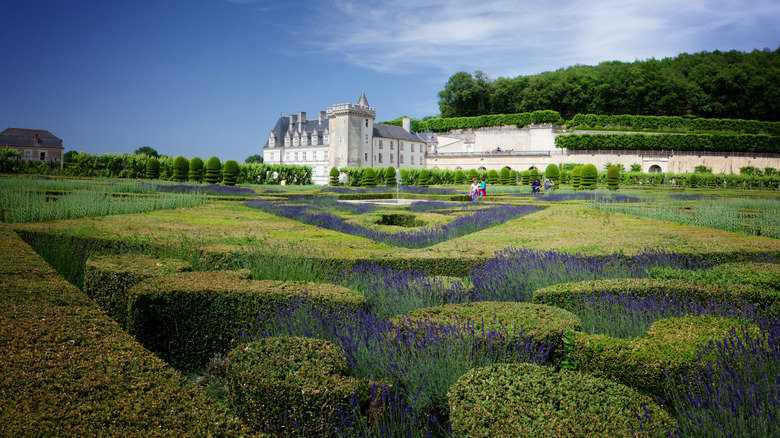Knot Gardens Are Trendy Right Now And You Can Get The Look
Knot gardens have a long history stretching back to Medieval times but really hit their stride during Tudor times, when they were popular in England and France. Despite originating as a way to organize kitchen gardens, these cousins of the orderly parterre garden have come a long way. Often designed to look like intricate Celtic knots, they are formal and require a lot of maintenance to keep them looking their best, but knot gardens are also trending. To get the look, you must take two key factors into account: the pattern and the plants.
A knot garden is all about being able to create and identify a pattern. It can be as simple or intricate as you want, but some kind of geometric pattern is a must. And you will need a flat area on which to lay out the pattern. Precision is key, so grab some stakes, string, or long lengths of wood to help map out your pattern. What and how much you need will, of course, be determined by the pattern you choose. These tools will help you lay out a precise pattern and tell you where to place your plants. Because pattern is key, your plants will repeat throughout the knot garden, so be sure you love whatever you pick (and that you can afford them).
Plot your knot
While you might be tempted to create an intricate Celtic knot out of formal boxwoods, you may want to choose a pattern that is easier to plant and maintain. A sunburst is easily identifiable and achievable for a first-time knot gardener. Simple intersecting shapes, such as a square that overlaps a circle, can also provide an easy but impactful design. In other words, start small, which is good garden advice that even Martha Stewart recommends. You can always add more later.
Once you know what pattern you want to use, clear the area where you will be planting. Typically, knot gardens are laid out within a square plot, and you may need to consider amending and leveling the soil before planting. This step, of course, depends on your soil and the plants you plan to grow. Prep work is always critical for a healthy garden, but if one plant in your knot garden isn't thriving — or worse yet, dies — the overall effect is thrown off. So, take your time.
Once the soil is prepped, it's time to get out your strings and stakes. The goal is to lay out your pattern as precisely as possible before putting a single plant in the ground. You will also follow the string as your planting guide to ensure you don't get thrown off and end up with an oval instead of a circle.
Pick the right plants
Plants are the key to achieving the knot garden look. Traditionally, they would have been filled with herbs and other edibles. So, plants like English lavender (Lavandula angustifolia) or rosemary (Rosemarinus officinalis) can form the hedge. In Tudor times, the gaps between may have been filled with vegetables or lettuce, which is still an option. In fact, because of the formal design, creating an edible knot garden is a great way to grow food in your front yard without raising the ire of your neighbors. However, the knot garden has gotten a modern update, so you don't have to stick with these traditional plants to get the same effect.
Evergreens like boxwood (Buxus sempervirens) and yew (Taxus baccata) are commonly used to create hedges and borders in today's knot gardens. Caring for boxwood is relatively easy, and they are easily clipped into a variety of shapes, so they make a great choice for knot gardens. You can fill in the spaces between hedges with more colorful flowers or keep it minimalist and focused on the shapes created by your hedges. Some gardeners are giving this traditional form a more modern edge, replacing evergreens and hedges with everything from sedums to grasses. The key is to repeat the plants in a way that makes it easy to see your knot garden's design and that will support their growth in your growing conditions. Varying plant heights will bring more interest and texture to the garden.


